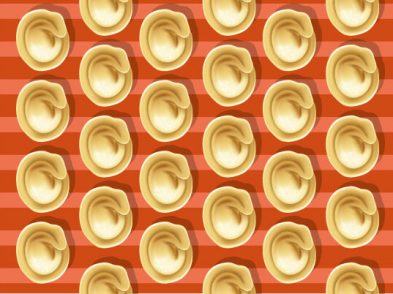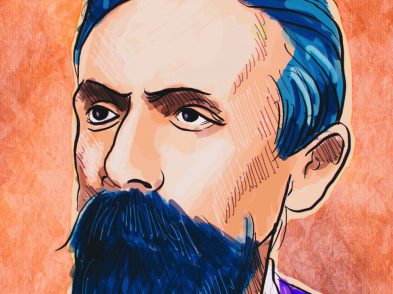There are few places in the world where you can drive, ride your bike or walk through what was once the sixteenth-century portal of a grand basilica, but you can in Florence. Coming on foot from the city centre, on nearing the end of borgo degli Albizi, you arrive at piazza San Pier Maggiore, in Dante’s old neighbourhood. There you come face to face with what was once the entrance to the church that gave its name to the piazza. The church itself was named for the Benedictine convent that once stood there. Traditionally, the abbess of that eleventh-century convent welcomed every new bishop on his arrival in town. During the ensuing ceremony, she placed a ring on his finger and therefore, facetiously, locals called the abbesses ‘the bishop’s bride’. Today, the church, like the convent, is gone, but two of the three main archways of the former church remain. Separated by the short street leading to via Verdi that runs down the middle, they now accommodate shops and, incongruously, a floor has been added above the colonnade, where there are now private apartments.
Florentine artist and engraver Giuseppe Zocchi’s 1744 drawing of the church of San Pier Maggiore—one of the few remaining illustrations of it—shows how imposing the building had been. Its importance is further reflected by the fact that it gave its name to an entire neighbourhood. At that time, the old walls still surrounded the city, and when a second circle of walls was built and the city divided into sestieri, its name continued as one of the city’s six official zones. This also gave the precinct the right to take part in the palio dei berberi, the race named after the breed of horses, which, up until 1858, was held annually on the feast day of Saint John the Baptist, the patron saint of Florence. Running without jockeys, the horses started in via Ponte alle Mosse, passed Porta al Prato, where the grand duke watched from a specially built dais and then proceeded along via Palazzuolo and via Strozzi, into via del Corso (probably named after the corso or race) until it ended under the arch of San Pierino, at the doorstep of the house of worship.
Starting in the late thirteenth century, the original Romanesque church on the site underwent several transformations, until the final 1638 renovation by Matteo Nigetti, the architect who also designed the facade of the church of Ognissanti. He added the portal and archways, the remains of which we see today. In fact, one of the capitals of the columns still bears the crest of the church’s powerful neighbours, the Albizi family, who were major benefactors.
The importance of this magnificent church, with its high altar and three grand aisles, was also evidenced in the art housed there. This included works by Andrea di Cione di Arcangelo known as Orcagna or ‘archangel’ in vernacular, a statue of whom adorns the exterior of the Uffizi; Sandro Botticelli; Pietro di Cristoforo Vannucci, nicknamed Perugino; and Ridolfo del Ghirlandaio, the son of Domenico Ghirlandaio. The Albizi family, it is believed, commissioned an enormous 12-panel altarpiece for the church in the fourteenth century. Attributed to Jacopo di Cione and his workshop, and now in the National Gallery in London, it features events from the life of St. Peter, who in one of the panels can be seen holding a model of the church. Other artwork included an Assumption of the Virgin by Francesco Botticini, also in the National Gallery, and a Visitation by Maso da San Friano, now in the Fitzwilliam Museum at Cambridge University. Among others, artists Luca della Robbia and Piero di Cosimo were buried there.
When Michelangelo died in Rome in 1564, the grand duke received the pope’s consent to bring the artist’s body back to Florence. Once the bier arrived, it was placed at the base of the high altar at San Pier Maggiore, where it was visited the day after by sculptors and painters from all over who came to pay their respects before the coffin was conveyed in a street procession to its final resting place in the basilica of Santa Croce.
When, in 1783, a column inside the church that had been compromised during an earlier renovation collapsed, it gave Grand Duke Leopold the pretext he was waiting for. Although the columns’ failure in no way made the building unstable, Leopold ordered the church to be demolished as part of his strategy to reduce ecclesiastical influence in Tuscany and to redevelop the area.
Several other religious institutions around the city profited from the levelling of the once grand church. The church of San Michele Visdomini situated on the corner of via Bufalini and via dei Servi, for example, acquired the fourteenth-century wooden cupboards for its sacristy, whilst the Hospital of the Innocents received what is now the main altar in its chapel, originally sculpted in pietra dura in the sixteenth century for San Pier Maggiore.








